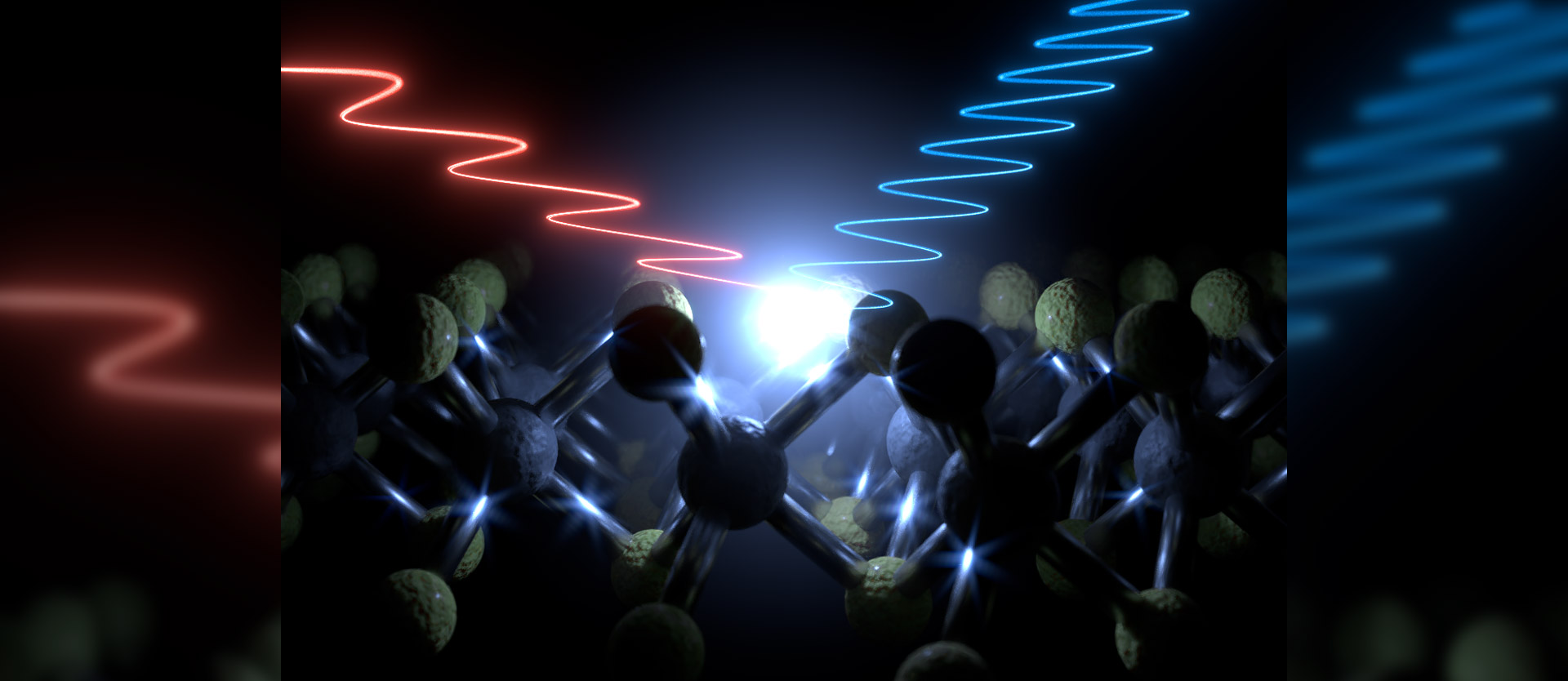
Less than nothing
A team of physicists at the University of Regensburg has measured the effect of electrons with negative mass in semiconductor nanostructures for the first time.

Matter is composed of three elementary particles, the atomic nuclei with heavy protons and neutrons and the light electrons. The weight of a body is determined primarily by the atomic nuclei. While the mass of the nuclei are a fixed quantity, the effective mass of the electrons is determined by the composition of the material in which they move. The mass directly affects the electronic properties of a material.
Now, when an electron moves through a material, collisions occur. As in driving a car, such collisions cause the motion to slow down in the case of positive mass. The electron of negative mass, on the other hand, also loses energy, but is accelerated. The researchers have now observed this phenomenon for the first time.
For this purpose, the scientists used a novel semiconductor material: a single, atomically thick sheet of the crystal tungsten diselenide. When the material is irradiated with a laser, it begins to glow: The electrons absorb the energy of the laser and emit it again in the characteristic color red. This color corresponds to the fundamental energy of an electron in the semiconductor. Just as water always flows downhill, one would expect electrons with higher energy to always take on this lower fundamental energy, and thus the semiconductor would always glow red.
However, the team observed an astonishing effect: When irradiated with a red laser, the electrons emit not only red light, but also blue. Low-energy red light is thus converted into higher-energy blue light. By looking closely at the color distribution and brightness of this blue light, i.e. the light spectrum, it can be concluded that the blue glow comes from electrons with negative mass. The researchers proved this astonishing finding with quantum mechanical calculations.
The observation may still be a scientific curiosity today. But the scientists already have a number of applications in mind. For example, the concept could contribute to the development of super-fast computers whose electrons move almost without resistance.
Finally, the fact that the electrons in the semiconductor seem to assume discrete energy states should make it possible to apply concepts from atomic quantum optics directly to the semiconductor. This could be used, for example, to develop new electronic devices that convert the wavelength of light, store or even amplify light, or even act as optical switches.
Original publication:
K.-Q. Lin, C. S. Ong, S. Bange, P. E. Faria Junior, B. Peng, J. D. Ziegler, J. Zipfel, C. Bäuml, N. Paradiso, K. Watanabe, T. Taniguchi, C. Strunk, B. Monserrat, J. Fabian, A. Chernikov, D. Y. Qiu, S. G. Louie, and J. M. Lupton, Narrow-band high-lying excitons with negative-mass electrons in monolayer WSe2, Nature Communications DOI 10.1038/s41467-021-25499-2.
More information:
www.physik.uni-regensburg.de/forschung/lupton Lupton Group









